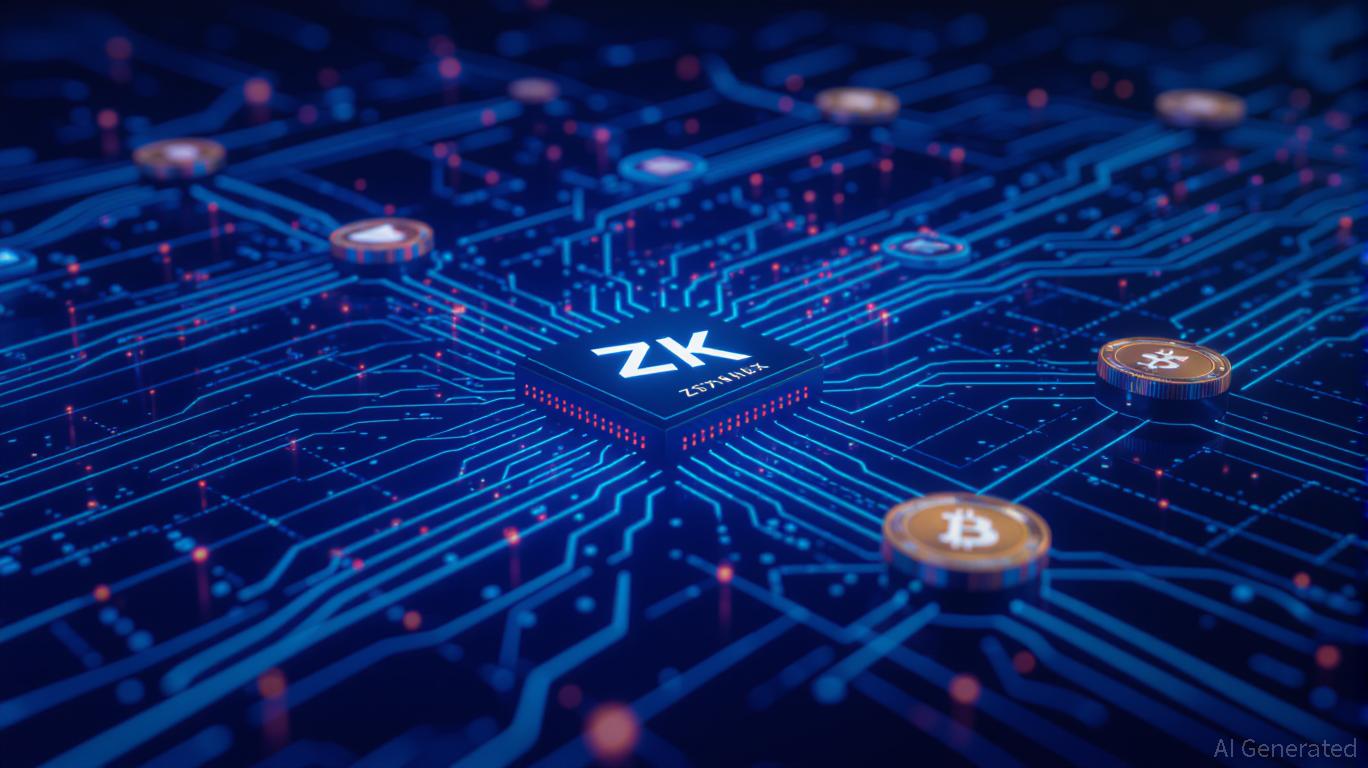Why ZK Coins Are Experiencing a Surge in November 2025
- ZK coins surged in November 2025 as DeFi platforms adopted ZK infrastructure for scalability, privacy, and cost efficiency. - Platforms like Polygon zkEVM and zkSync reduced Ethereum gas fees by 90% while enabling thousands of transactions per second. - Institutional adoption (Deutsche Bank, Sony) and Zcash's 23% price jump highlighted ZK's role in bridging privacy-focused crypto with mainstream finance. - Technological breakthroughs in ZK scaling (50x cost reduction) and rising TVL ($72M BTC bridged to
ZK Infrastructure: The Foundation for DeFi’s Future Expansion
Zero-knowledge proofs, a cryptographic breakthrough that allows for secure and private transactions at scale, have become essential for DeFi platforms aiming to rival conventional financial institutions. Solutions like Polygon zkEVM and zkSync are at the forefront of this movement. For example, Polygon’s ZK-Rollup technology can cut
StarkNet, another platform built on ZK technology, utilizes STARKs (Scalable Transparent Arguments of Knowledge) to process transactions off-chain and submit proof of validity to Ethereum’s main network. This method not only boosts transaction throughput but also guarantees cryptographic privacy—an increasingly important feature for users concerned about surveillance and regulatory pressures, as mentioned in a

The ZK Coin Boom: Privacy, Scalability, and Institutional Interest
The recent upswing in ZK coins, especially Zcash (ZEC), is closely linked to the growing use of ZK infrastructure.
Growing institutional involvement has further boosted demand. For instance, Deutsche Bank and Sony have adopted ZK-rollup solutions to facilitate large-scale transactions in compliance with regulatory requirements, according to Bitget’s analysis. At the same time, platforms such as Aztec are utilizing ZK-Rollup technology to enable confidential DeFi transactions, ensuring privacy without compromising on verification, as highlighted in the Top 10 ZK Rollup Projects in 2025 report. These advancements indicate a maturing industry where ZK infrastructure is evolving from a technical enhancement to a strategic necessity for both DeFi and traditional financial institutions.
Innovation and Shifting Market Forces
The intersection of technological progress and institutional participation has created a positive feedback loop for ZK coins. Innovations in ZK scaling, such as improvements to Ethereum’s EVM, have slashed the costs of ZK-proofs by a factor of 50, enabling layer 2 solutions like Lighter to process over 24,000 transactions per second, as detailed in Bitget’s analysis. This enhanced scalability has made ZK-rollups a viable backbone for DeFi, drawing interest from both individual and institutional investors.
Additionally, the unique benefits of ZK coins are driving their integration into DeFi platforms. Zcash’s robust privacy features, for example, meet the rising demand for financial anonymity in an era marked by frequent data leaks and surveillance, as discussed in the
Conclusion: The Long-Term Outlook for ZK Coins
The sharp rise in ZK coins during November 2025 points to a larger movement: the widespread integration of ZK-based infrastructure within DeFi. As platforms such as
Disclaimer: The content of this article solely reflects the author's opinion and does not represent the platform in any capacity. This article is not intended to serve as a reference for making investment decisions.
You may also like
Noomez's Scarcity Engine: Creating Value for Crypto's 2025 Bull Market
- Noomez ($NNZ) gains traction with a 28-stage presale using escalating prices, permanent token burns, and liquidity locks to create scarcity and 1000x return potential. - The deflationary model includes 280B fixed supply, 50% allocated to presale, with Vault Events at stages 14/28 triggering additional burns and airdrops. - Transparency features like the Noom Gauge dashboard and 15% liquidity locks, plus 66% APY staking rewards, differentiate it from speculative meme coins. - Stage 3 shows 51% price growt

Public Company's $IP Token Reserve Marks the Beginning of a Programmable IP Economy Era
- Crypto.com partners with IP Strategy, first public company to use $IP tokens as primary reserve asset. - Agreement includes custody, trading, and staking for 52.5M $IP tokens valued at $230M, boosting institutional IP token adoption. - Partnership enables regulated exposure to $80T programmable IP economy via Story Protocol's blockchain infrastructure. - Executives highlight infrastructure's role in securing IP assets while risks like liquidity and custody execution remain critical concerns.

Meta’s lead AI researcher Yann LeCun is said to be preparing to depart in order to launch his own company